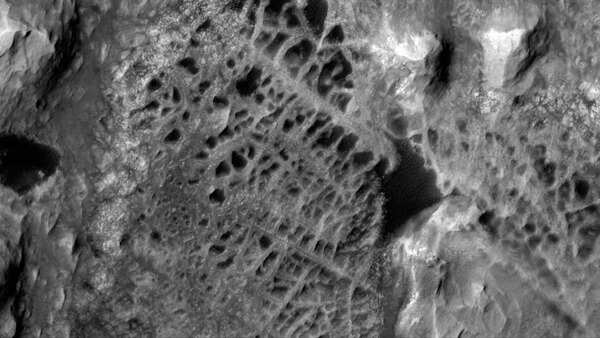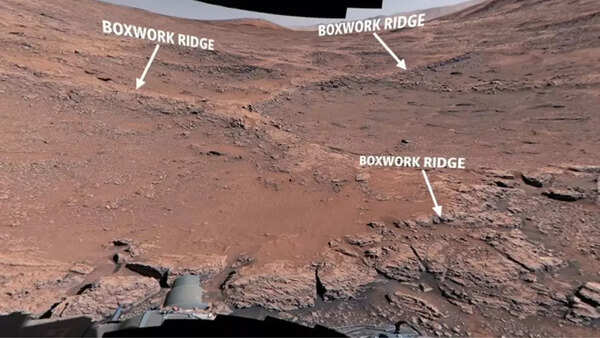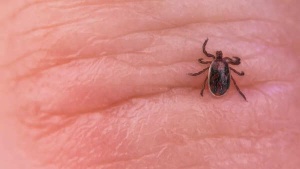NASA's Curiosity rover has made a groundbreaking discovery on the surface of Mars: intricate, spiderweb-like rock formations. These unique structures offer valuable insights into the Red Planet's ancient, water-rich history.
The formations, known as "boxwork," are located on the slopes of Mount Sharp within the Gale Crater, where Curiosity has been actively exploring since 2012. These mineral-rich ridges, resembling delicate webs when viewed from above, are believed to have originated from ancient groundwater activity. Scientists are optimistic that these formations hold essential clues about Mars' potential to have supported microbial life in the distant past.
What are Martian "spiderwebs" that are captured by NASA?

Contrary to their nickname, these "spiderwebs" are not the work of Martian insects. They are geological formations called boxwork, characterized by a pattern of intersecting mineral ridges. These ridges form when groundwater permeates through cracks in the rock, leaving behind mineral deposits. Over time, the surrounding softer rock erodes due to wind, revealing the hardened, web-like framework underneath.
While boxwork formations have been observed from orbit, this marks the first time they have been closely examined on Mars. Curiosity reached the site in early June 2025, following months of navigating Mount Sharp. On June 23, NASA released images and a 3D interactive video of the formations, highlighting them as a top scientific priority due to their distinctive structure and mysterious location.

Analysis of the adjacent rocks reveals veins of calcium sulfate, a salty mineral typically left behind by groundwater. These findings indicate that the area was once abundant in liquid water. The underground environment may have been warm and salty, potentially providing a habitable environment for microbial life, similar to some regions on early Earth.
It is important not to confuse these newly imaged boxwork formations with the so-called "spiders on Mars." The latter refers to dark, radial patterns caused by carbon dioxide ice erupting from beneath the surface. Unlike those seasonal features, boxwork is permanent and mineral-based, resulting from geological rather than atmospheric processes.
Scientists suggest that these formations could contribute to resolving the debate about whether Mars once harbored life. The mineral composition, protected underground conditions, and evidence of flowing water all suggest an environment that could have sustained microbial organisms. As Kirsten Siebach, a Curiosity mission scientist, stated, "Early Earth microbes could have survived in a similar environment."
Curiosity will continue its investigation of this boxwork region on Mount Sharp, collecting samples and performing detailed chemical analyses. Researchers hope that these unique structures will provide further insights into Mars' climate history and guide future missions in the search for evidence of life beneath the Martian surface.
Newer articles
 Vijay Officially Named TVK's Chief Minister Hopeful for Tamil Nadu's 2026 Election
Vijay Officially Named TVK's Chief Minister Hopeful for Tamil Nadu's 2026 Election
 RJ Mahvash Prioritizes Work Over Buzz, Addresses Link-Up Speculation
RJ Mahvash Prioritizes Work Over Buzz, Addresses Link-Up Speculation
 JPG to PDF: A Comprehensive Guide for Graphic Designers & Professionals
JPG to PDF: A Comprehensive Guide for Graphic Designers & Professionals
 UNESCO's World Heritage Wonders: Unveiling 10 Iconic Sites, From Petra to the Pyramids
UNESCO's World Heritage Wonders: Unveiling 10 Iconic Sites, From Petra to the Pyramids
 iQoo Z9 Turbo: Rumored Specs Emerge – Snapdragon 8s Gen 3, 6000mAh Battery Highlighted
iQoo Z9 Turbo: Rumored Specs Emerge – Snapdragon 8s Gen 3, 6000mAh Battery Highlighted
 Shadman Islam Defends Bangladesh Batters After Day 1 Struggles Against Sri Lanka
Shadman Islam Defends Bangladesh Batters After Day 1 Struggles Against Sri Lanka
 England's Bold Claim: Could They Have Chased Down 450 Against India?
England's Bold Claim: Could They Have Chased Down 450 Against India?
 5 Often-Missed Warning Signs of Bladder Cancer You Need to Know
5 Often-Missed Warning Signs of Bladder Cancer You Need to Know
 KL Rahul Puts Country First, Prioritizes England Tests Over Newborn Child
KL Rahul Puts Country First, Prioritizes England Tests Over Newborn Child
 Tick Bite Paralyzes Fitness Influencer: A Wake-Up Call for Outdoor Enthusiasts
Tick Bite Paralyzes Fitness Influencer: A Wake-Up Call for Outdoor Enthusiasts